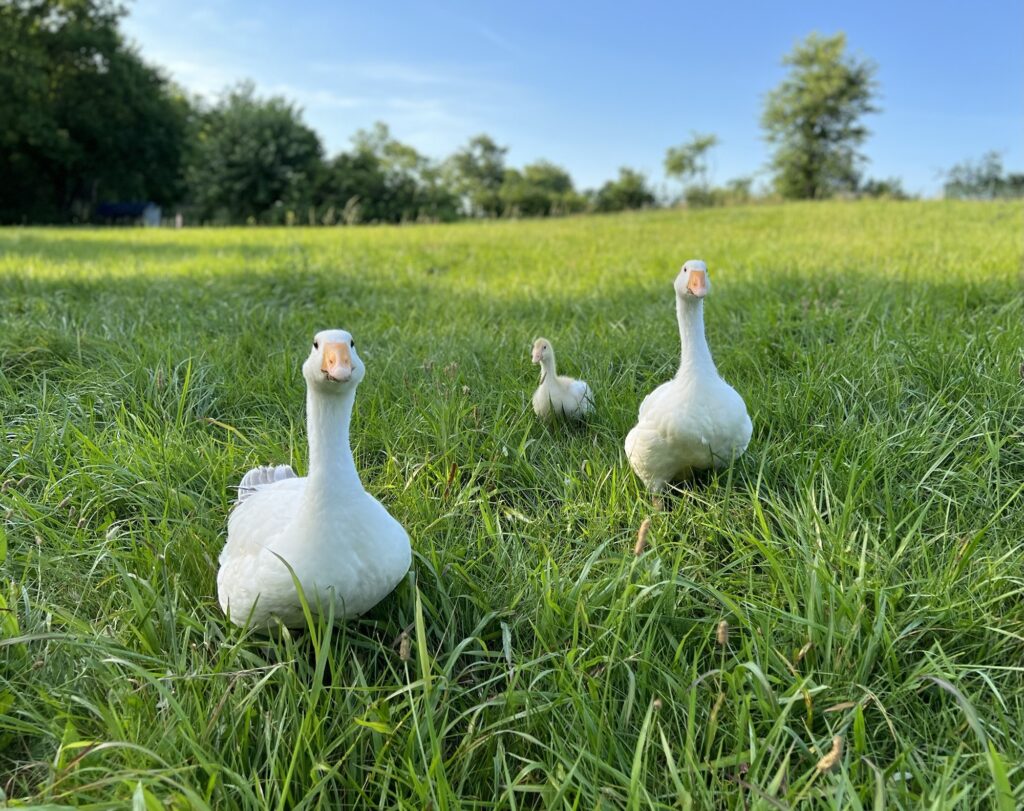
There comes a time in our young poultry’s lives where they must make the transition from being human-raised babies to becoming the fowl that they’re meant to be. That time arrived recently, when the last of this season’s ganders, Eddie, Alex, and Wolfie, joined the Pilgrim gaggle.
Integrating new birds into an established group is typically stressful…and it can be dangerous for the newcomers. We’ve found that chickens (and guinea fowl, in particular) can be reluctant to accept newcomers and may even cause injury in their attempts to expel strangers. Even if violence doesn’t ensue during an integration, it’s always disruptive for both the newcomers and the established members. In short, it’s a nail-biter for us.

One method to try to faciliate a smooth integration is to use the “look but no touch” approach, where the existing flock can see the newcomers but not reach them. This introduction allows the groups to become familiar with each other in a safe environment, gradually. Because the main gaggle is in a secured area where the youngsters can’t go, they were able to see (and talk to, and boy did they!) each other each day for a couple of hours. What may sound like angry honks and screams to the uninitiated really was the geese’s way of greeting the goslings and expressing their interest in them.
The females were particularly interested in the three boys. Each day, when the goslings would follow us to the main chicken coop and barn area, the geese would “yell” through the wire fence to the boys, and some of the ladies would try to stick their heads through to reach the young ganders. As we watched, we realized that this wasn’t aggressive – they were just very, very interested in the youngsters.
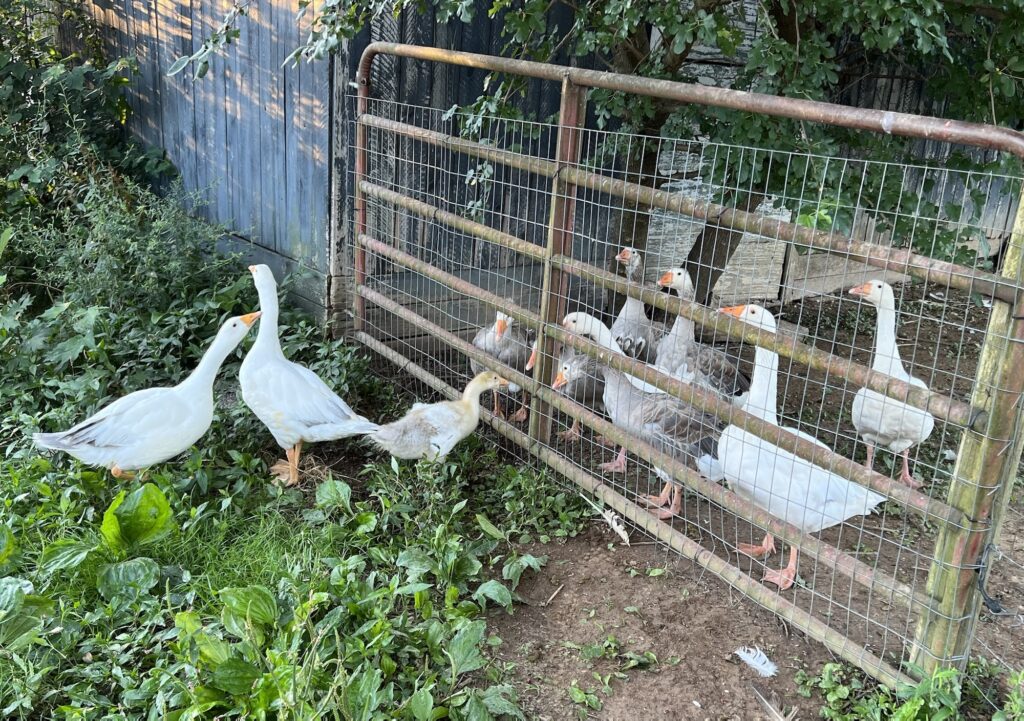
At first, the goslings were frightened. They are imprinted on us, after all, so they weren’t sure why these big creatures were yelling at them and trying to grab them. The boys would run away from the geese to us, which made me laugh and feel sad at the same time – sad because I knew they were geese, and that their future would be with the adults who were, at the moment, scaring the wits out of them.
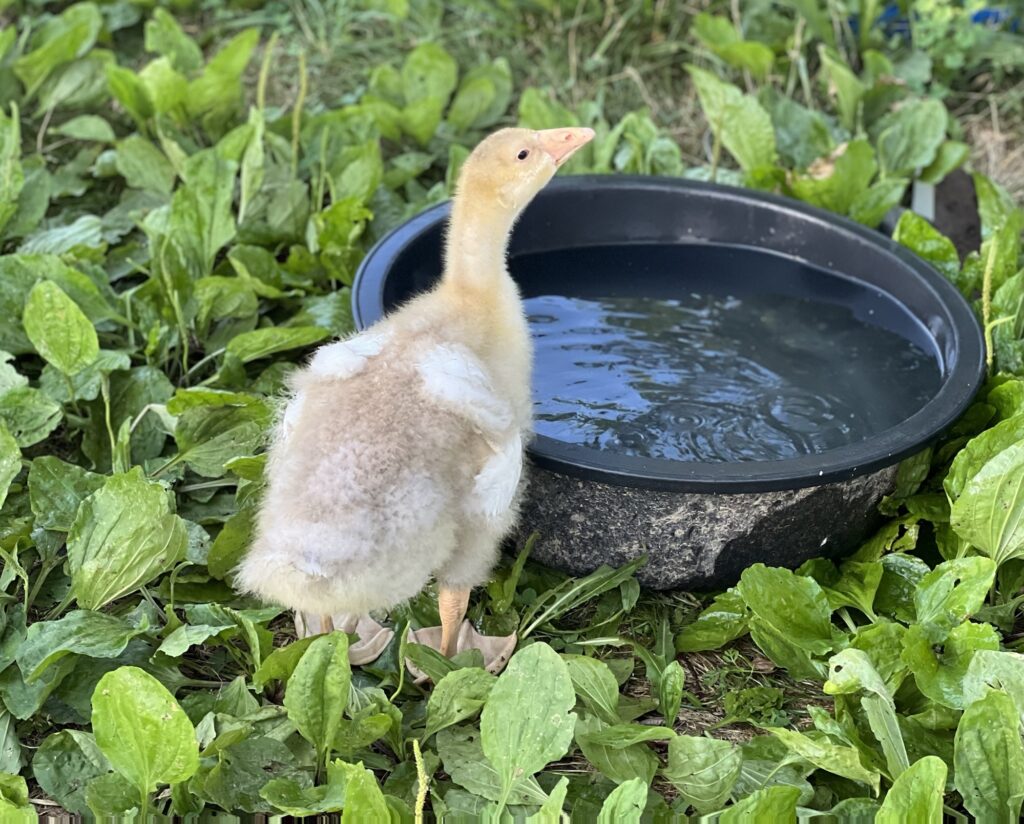
Over the next few weeks, the goslings grew larger and more confident, and they became more interested in the adults. They would go right up to the gate in the barn area and talk back to the adults. I was particularly worried about Wolfie, who was a couple of weeks younger than the other boys. He still had baby down on the back of his head that stuck up like an Elizabethan collar and some fuzz near his tail area, and I wondered if he was too young to successfully integrate; I typically don’t integrate geese until they’re fully feathered and older than Wolfie, but Eddie and Alex were ready and had outgrown their low tractor, and I believed it would be easier to integrate him with his brothers than to try to integrate him alone at some point in the near future. A solo gosling (or goose) would have a hard road ahead being integrated alone.
One morning, the boys followed the Gorilla cart with the food buckets into the secured goose area, and instead of shooing them out as we normally would, we simply shut the gate behind them. Soon after, we released the geese from their coop…and held our breath. As the adult gaggle came racing around the corner in their full yelling glory, they discovered the newcomers. And began chasing them around.
Poor little Wolfie was a favorite for the adults to chase. He ran for all he was worth, screaming in his baby voice. He didn’t understand why these creatures delighted in goosing (there’s a reason it’s called that) him, and he became separated from Alex, who usually watches over him. After the novelty wore off, the adults went about their usual business of bathing and heading out to their pasture area. We watched the interactions for a while, and then periodically checked on the boys throughout the next few days. It was difficult to leave Wolfie there when I could hear his fearful cries, but I knew from other integrations that the adults wouldn’t hurt the boys and that, one day soon, they would be a cohesive group.
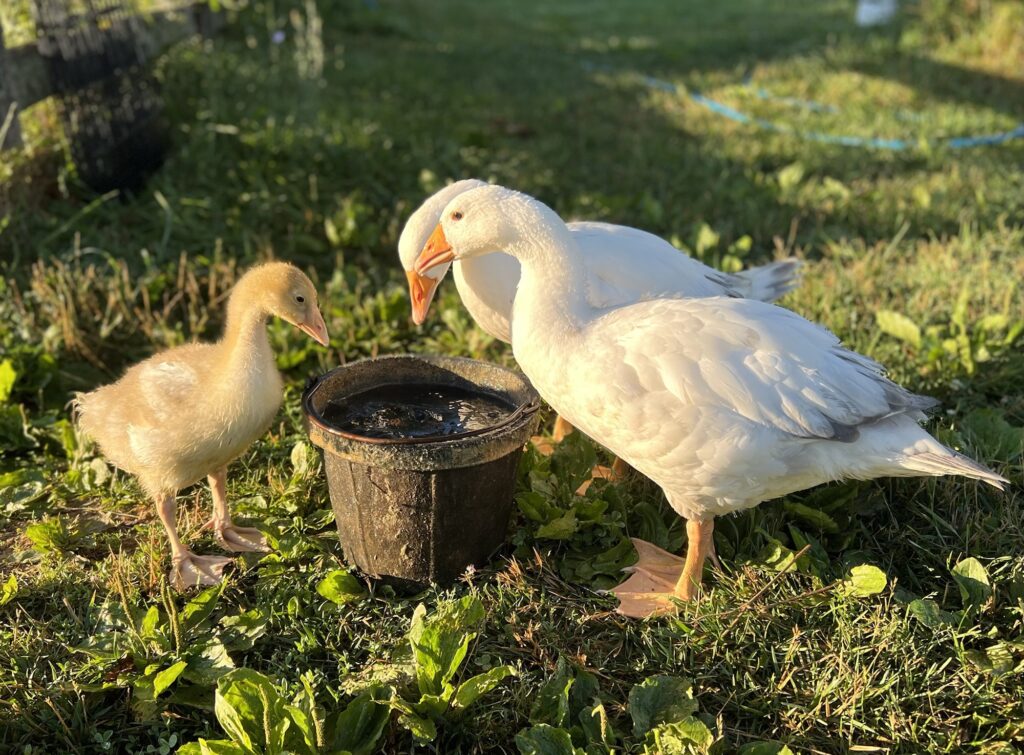
Over the next few days, the adults grew less interested in harassing the boys, and the boys also seemed more relaxed. I could go outside without hearing Wolfie’s cries, and when I checked on them, the trio was usually together, either eating or resting. While adults might grab at one of the boys (often Wolfie) as they passed by, the adults also looked out for them, calling to them when they were separated. Sometimes adults would even hiss at us, as if to warn us to stay away from “their” babies.
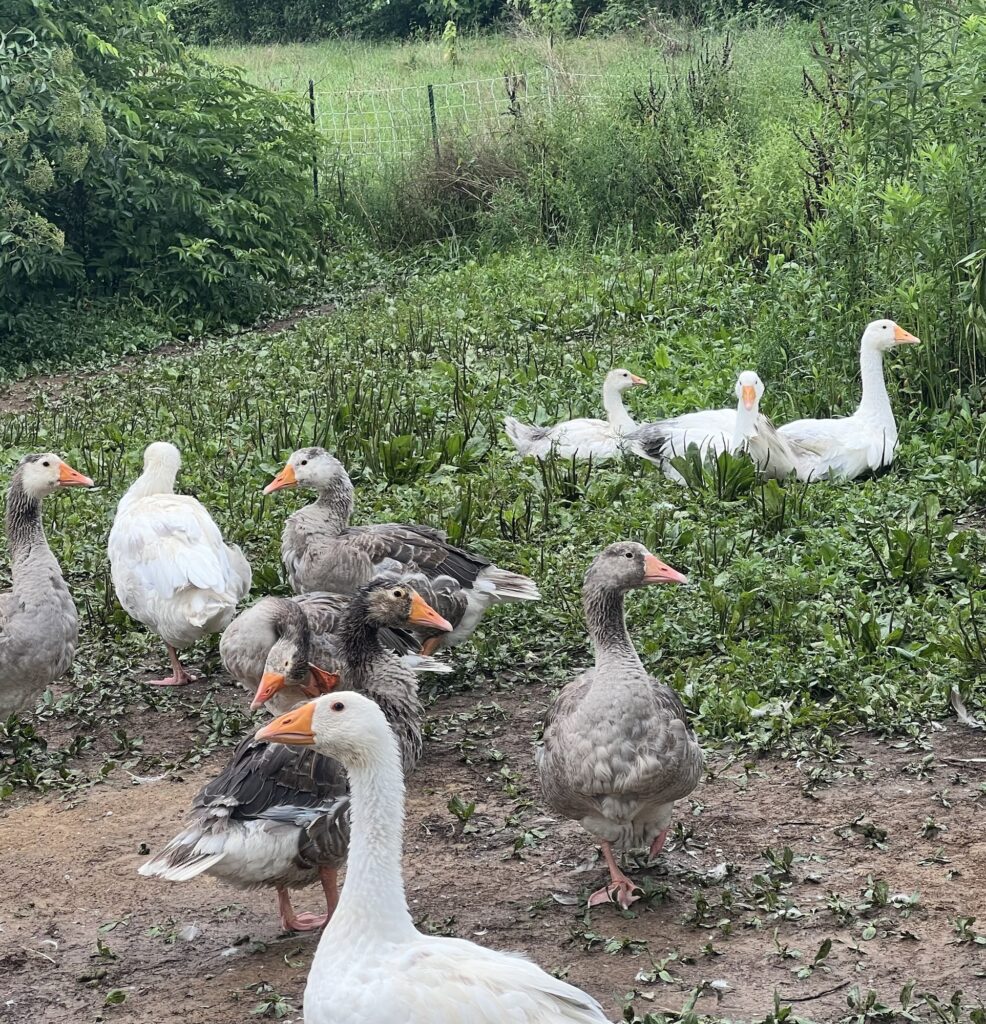
It felt as if the integration was going as we’d hoped, and an encounter one day truly drove it home: as the main group hustled by to whatever important goose business they had to attend to, the trio looked a bit confused – the older boys seemed to understand that they should follow the group, but Wolfie seemed conflicted. He looked at me, slightly panicked, as if he, briefly, wasn’t sure if he should run to me or away with the others. And in that moment, I knew my relationship with him had changed – he was now, and forever after, a goose. He needed to go with the gaggle, and he did. He was no longer mine.
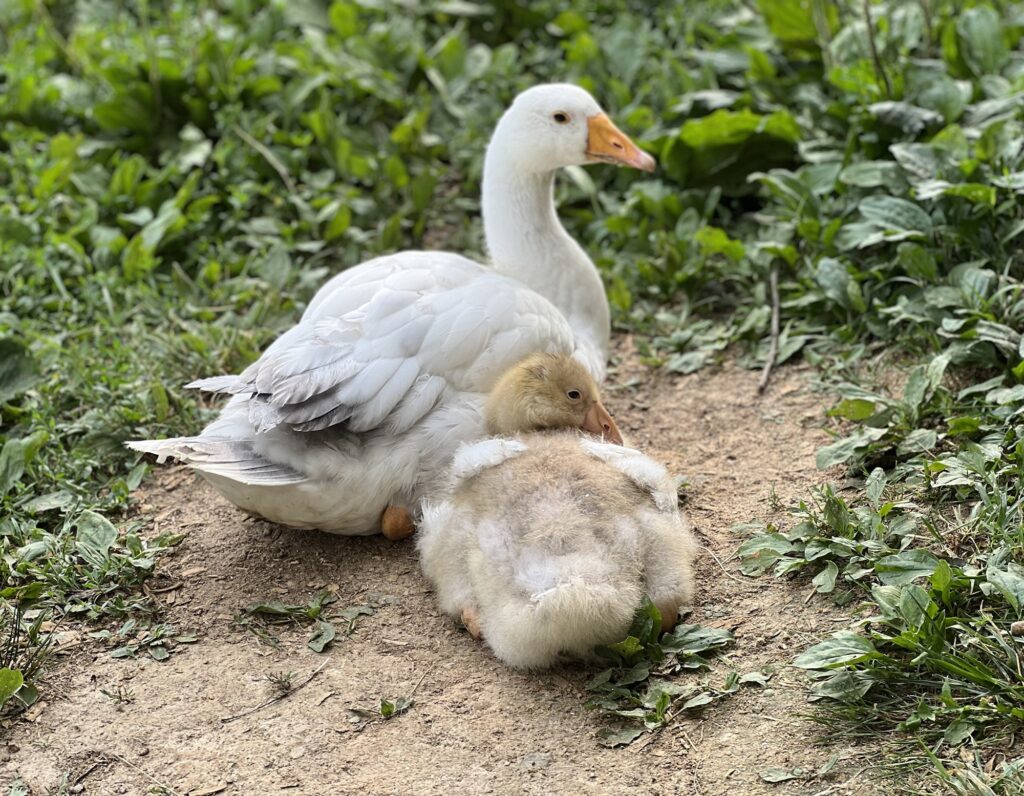
There was a bit of sadness in letting him go to be true to his nature, but my overriding feelings were of happiness and pride. The boys had grown up and joined the gaggle. They would have the safety of the adults protecting them, and, one day, they might even have girlfriends. This was how it should be.
The boys have even finally figured out how to go up the ramp into the goose coop by themselves – always an important (and celebrated) milestone! They’re still friendly, greeting us in the morning and hanging around us more than the older geese, but, in my heart, I know that if they were scared now, they’d run to the gaggle. And I’m glad.
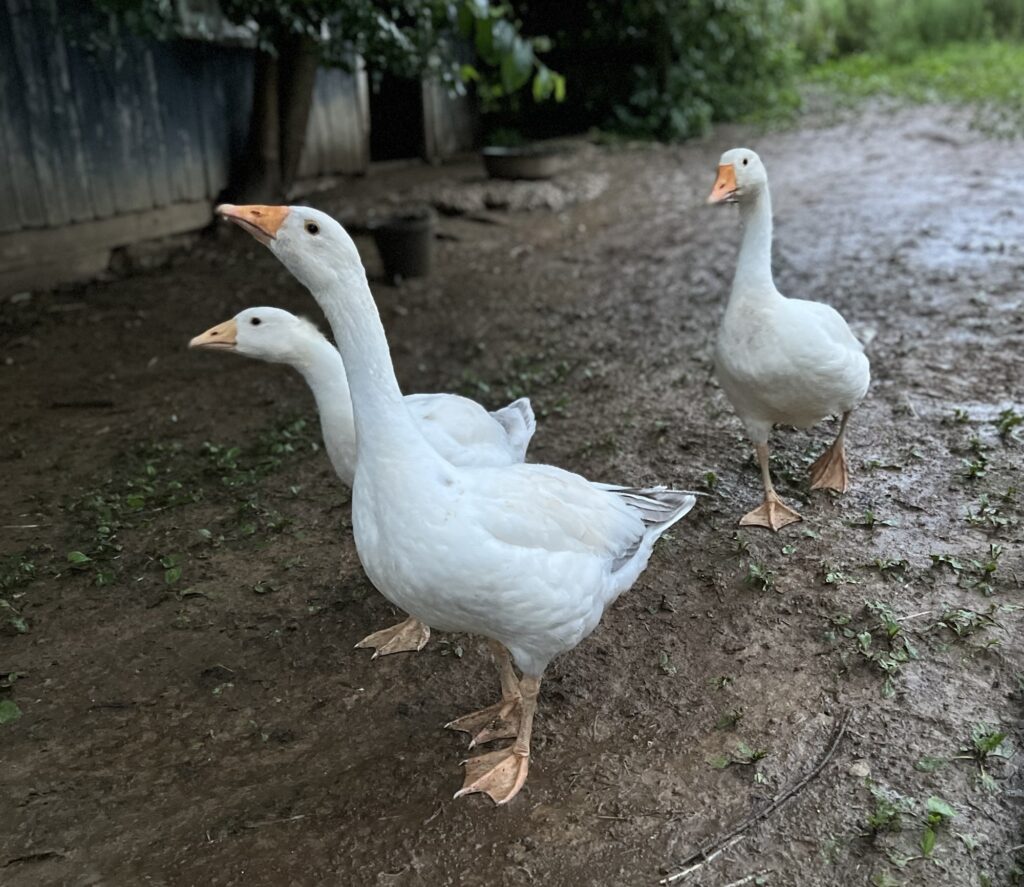
Pilgrim geese are known for their outstanding parenting skills. We’ve been able to easily integrate goslings of different ages together, and adults have taken goslings hatched by us under their wings. They have truly been a delight when it comes to accepting goslings into the fold, and it’s been a heartwarming experience to observe.
